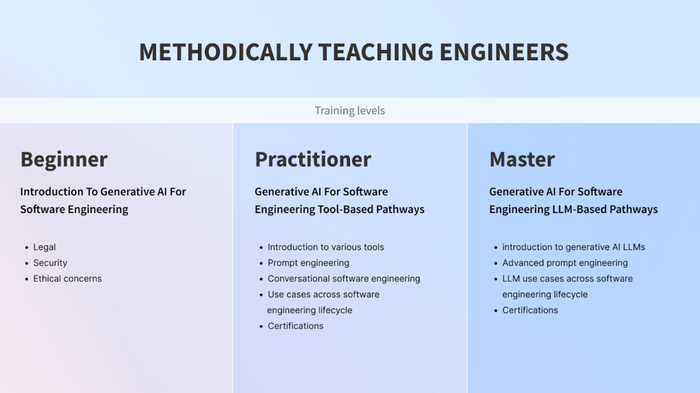How AI Can Speed Disaster Recovery
Disaster recovery technologies are designed to prevent or minimize the data loss and business disruption resulting from unexpected catastrophic events. This includes everything from hardware failures and local power outages to cyberattacks, natural disasters, civil emergencies, and criminal or military assaults. As AI continues to transform and enhance a seemingly endless array of tasks and functions, it should come as no surprise that the technology has caught the attention of disaster recovery professionals. Preparation and Response Joseph Ours, AI strategy director at Centric Consulting, says AI can assist disaster recovery in two essential areas: preparation and response. “In many respects, speeding disaster recovery means planning and preparing,” he observes in an email interview. Ours notes that a growing number of government agencies and insurance companies are already routinely performing these tasks with AI assistance. “They use predictive and classification models to analyze historical data and environmental factors to determine potential risk.” AI-enabled resiliency planning provides speed and precision that traditional methods lack, says Stephen DeAngelis, president of Enterra Solutions, an AI-enabled transformation and intelligent enterprise planning platform provider. “AI’s ability to process large volumes of data quickly allows it to detect anomalies and potential risks earlier,” he explains in an online interview. Unlike conventional disaster recovery plans, AI-powered solutions are adaptive, updating in real-time as conditions change. “This means companies can pivot their strategies almost immediately, reducing the time needed to return to normal operations and ensuring minimal disruption to the supply chain.” Related:Nation-State Threats Persist with Information Breach of US Treasury Automatic Detection In businesses, AI-enhanced disaster recovery automatically detects anomalies, such as ransomware-corrupted data, allowing technicians to skip over unusable files and focus on clean, viable backups, says Stefan Voss, a vice president at data protection and security firm N-able. “This eliminates the time-intensive, manual review process that’s standard in conventional recovery methods.” AI can also improve boot detection accuracy, ensuring that machines will bounce back successfully after recovery, Voss says in an email interview. “Well-trained AI models can significantly reduce false positives or negatives, enhancing technician confidence in the reliability and efficiency of the restored systems,” he explains. “With AI-driven accuracy, organizations can recover systems faster, with fewer errors, and minimize downtime.” Related:Bridging a Culture Gap: A CISO’s Role in the Zero-Trust Era AI solutions rely on access to high-quality data to generate accurate predictions. “When data is siloed or incomplete, models are likely to produce less reliable results,” DeAngelis warns. To ensure success, he advises businesses to establish robust data management practices before implementing AI solutions. “Today, we’re seeing innovators develop sophisticated techniques, such as advanced data modeling, to bridge critical data gaps and enhance AI accuracy.” Getting Started An important first step toward using AI in disaster recovery is conducting a comprehensive assessment of current supply chain vulnerabilities. “Identify critical points of failure and gather historical data on past disruptions,” DeAngelis suggests. Next, collaborate with an AI partner to build predictive models that simulate various disaster scenarios, such as geopolitical risks or extreme weather events. Focus on implementing AI tools that integrate seamlessly with existing systems, allowing for smooth data flows and real-time updates. “A phased approach is ideal, beginning with pilot projects and scaling up as the organization gains familiarity with the technology.” Related:The Biggest Cybersecurity Issues Heading into 2025 Voss says the next step should be identifying any existing challenges in the disaster recovery process. “For example, if your main goal is increasing recovery testing accuracy, look for AI tools designed to improve boot detection and guarantee reliable system restoration,” he suggests. “On the other hand, if the goal is precisely detecting backup anomalies, focus on AI solutions that specialize in identifying compromised or corrupted data quickly and accurately.” After clearly defining the issue at hand, seek out the AI solution that will meet your needs, Voss advises. “Always start with your pain points and let AI provide the answer, not the other way around.” Challenges AI disaster recovery can offer significant advantages, yet it also comes with several serious drawbacks. High development and integration costs can be a barrier, especially for small businesses, Voss says. “The skills shortage in AI expertise makes it difficult for organizations to develop or maintain AI-driven systems.” Remember, too, that even with well-trained models, AI is far from infallible. False positives or negatives can occur, potentially complicating recovery efforts, Voss warns. “Additionally, an over-reliance on AI can reduce human oversight, making it imperative to strike a balance between automation and manual processes.” Perhaps the biggest drawback is that some disasters arrive as unpredictable black swan-type events. “In this case, AI is neither a benefit nor contributor to the failure to respond because, by their very nature, humans would struggle to respond adequately as well,” Ours says. A Competitive Edge A proactive investment in AI not only mitigates risk but can turn challenges into competitive advantages, DeAngelis says. He notes that by being prepared to adapt quickly when disruptions occur, enterprises can maintain continuity and even capture market share from less-prepared competitors. “As we’ve seen from recent events, such as the US port strike, hurricane-related supply chain impacts, and the ongoing pressures of inflation, businesses that leverage AI to build resilience are better positioned to thrive in uncertain environments.” source
How AI Can Speed Disaster Recovery Read More »













